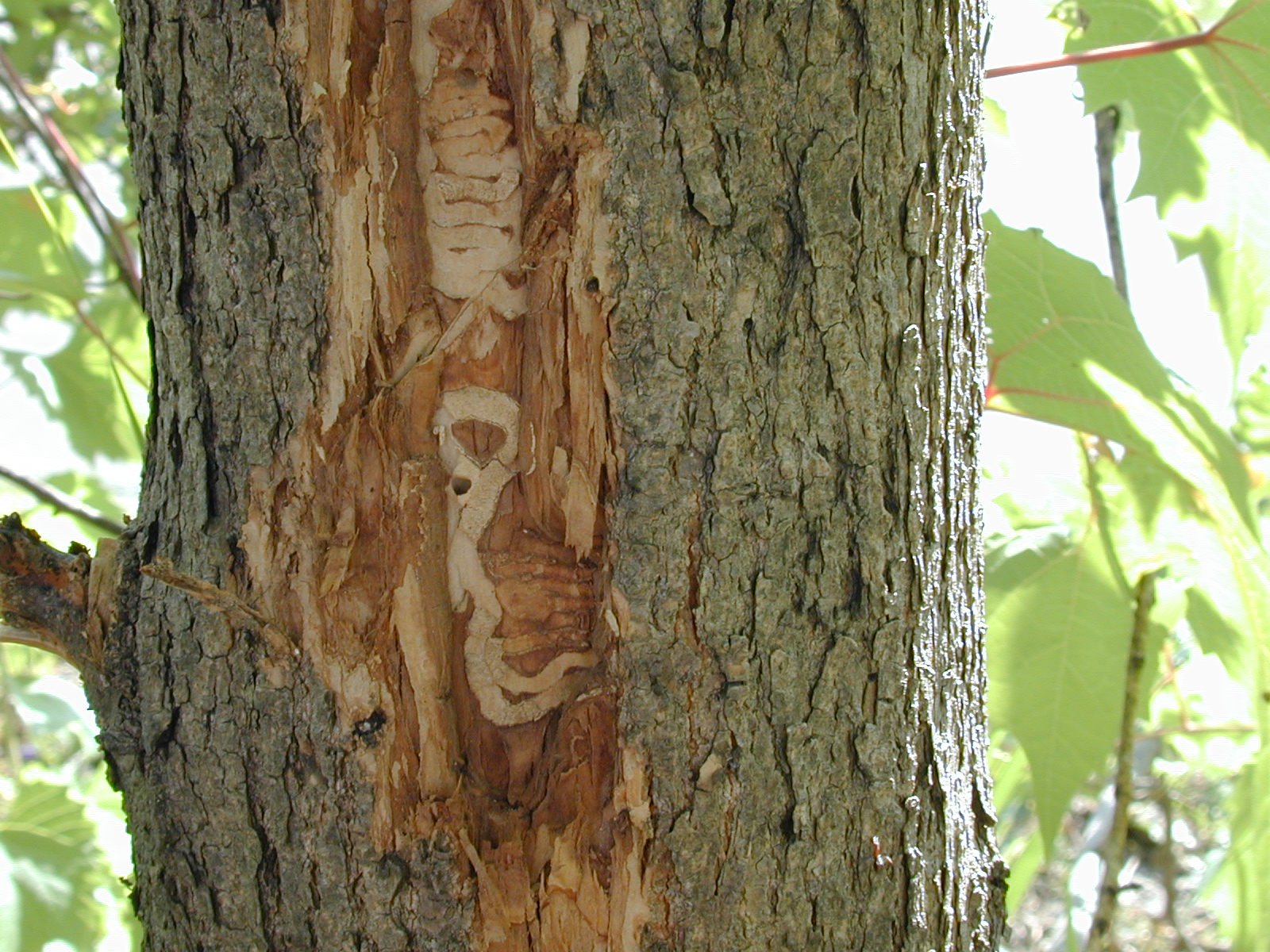How to identify the presence of EAB: Signs and Symptoms
This page is part of the Guidance Document Repository (GDR).
Looking for related documents?
Search for related documents in the Guidance Document Repository
EAB only attacks ash trees of the genus Fraxinus. This does not include Mountain ash. The most tree damage is caused by the EAB larvae, which destroy the layer under the bark (the cambium) that is responsible for transporting nutrients and water throughout the tree. See Figure 1.
With this transport system blocked, an otherwise healthy tree may die in 2 to 5 years, depending on its age and the extent of infestation. Damage to the tree from the larvae will be apparent under the bark. The feeding larvae create distinctive serpentine (or S-shaped) galleries in the wood as they feed. See Figure 2.
Signs of EAB infestation usually only become apparent once a tree has been heavily infested. These signs include the loss of green colour in the uppermost leaves (chlorosis) and thinning and dieback of the crown. See Figure 3.
As the infestation continues, the tree may develop sprouts (epicormic shoots) from the roots, trunk or branches, in an effort to find new ways to transport nutrients. Eventually however, with more and more of the crown dying, the tree will starve to death. See Figure 4.
Adult EAB beetles typically begin to emerge from the tree in May, creating small D-shaped exit holes. These adults will then fly to the next available ash tree and feed on leaves until they lay eggs on the bark, which eventually become larvae and then the cycle begins again. See Figure 5.
Click on images for larger view
-

Figure 1: Size comparison of EAB larva to a penny - Jerry Dowding, CFIA staff -

Figure 2: 'S'-shaped galleries between the bark and the wood caused by larvae feeding - CFIA -

Figure 3: Declining crown resulting from EAB infestation - Ches Caister, CFIA staff -

Figure 4: 'S'-shaped galleries between the bark and the wood caused by larvae feeding and sprouts or epicormic shoots - CFIA -

Figure 5: 'S'-shaped galleries between the bark and the wood caused by larvae feeding and 'D'-shaped exit holes - Troy Kimoto, CFIA staff
- Date modified: